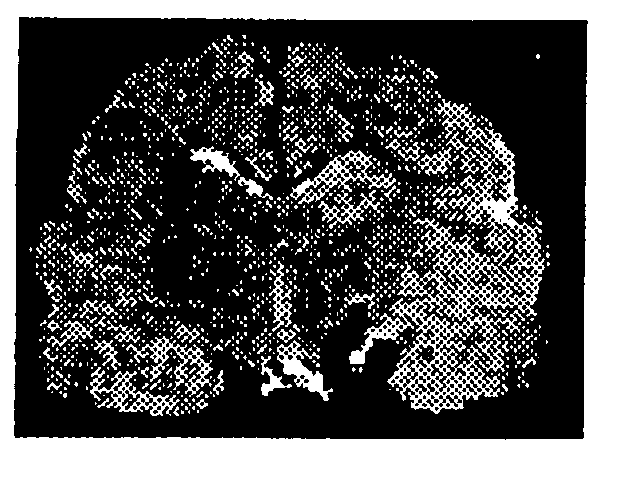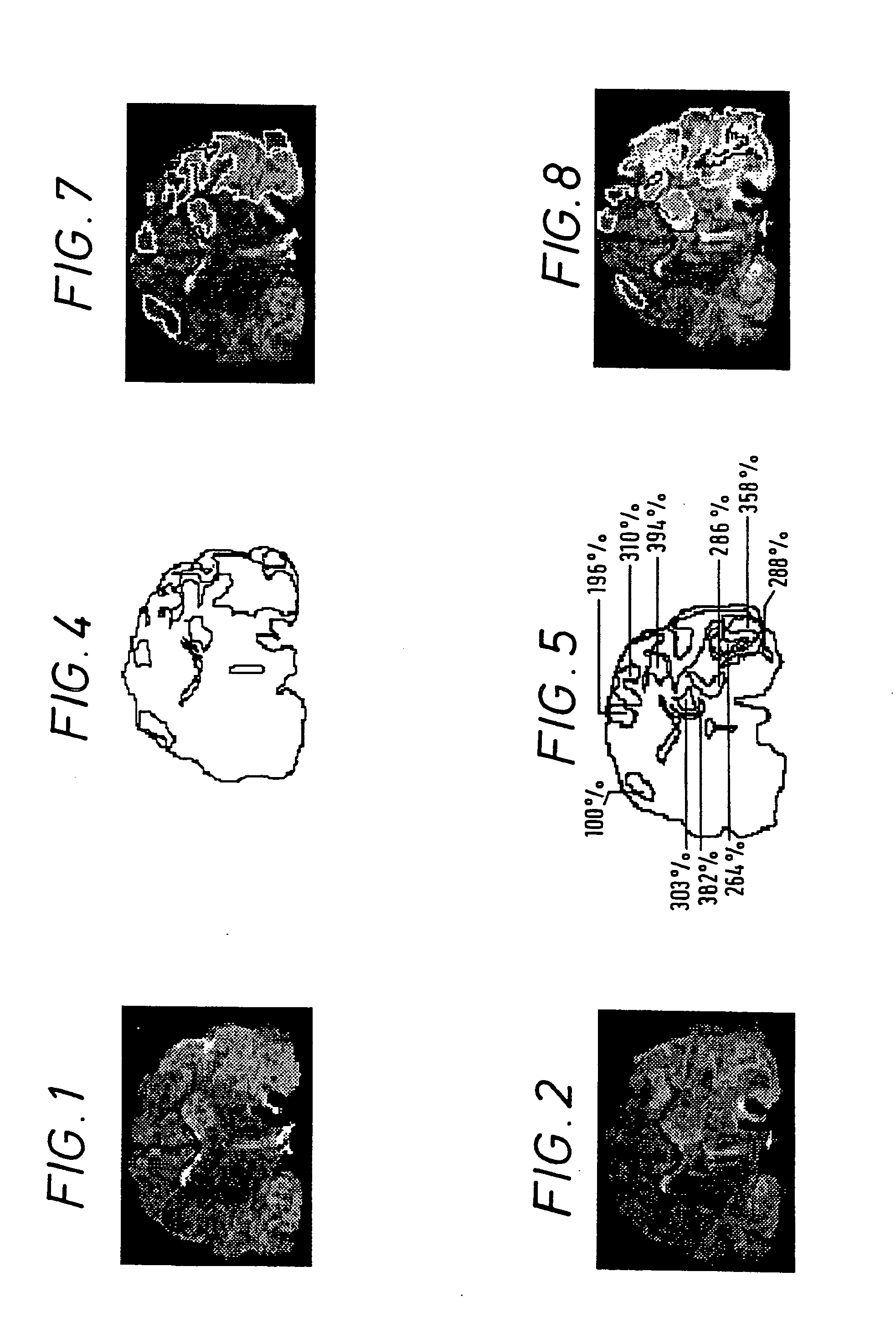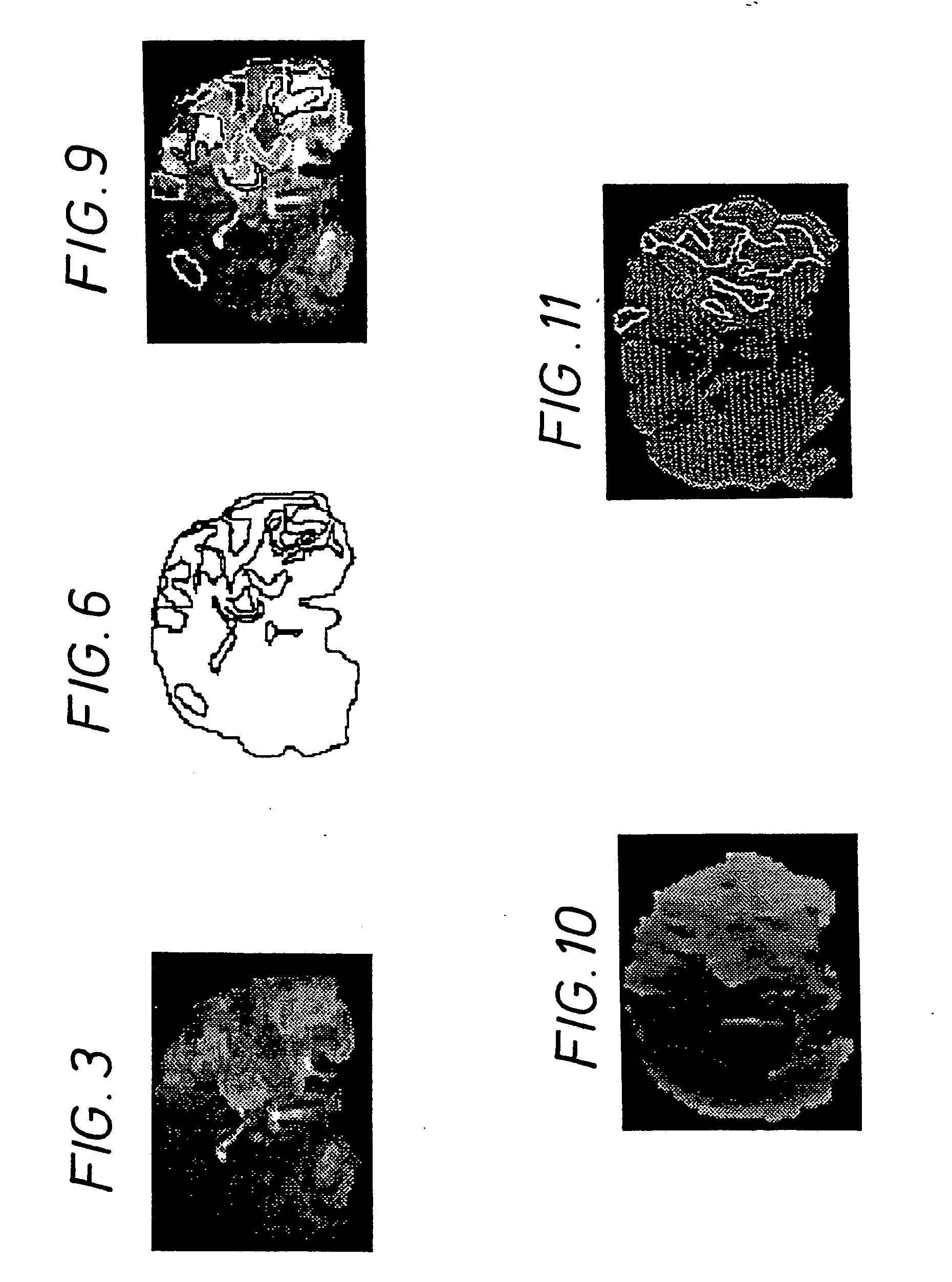Methods of perfusion imaging
a perfusion imaging and magnetic resonance technology, applied in the field of magnetic resonance imaging, can solve problems such as the association of blood perfusion deficits
- Summary
- Abstract
- Description
- Claims
- Application Information
AI Technical Summary
Benefits of technology
Problems solved by technology
Method used
Image
Examples
Embodiment Construction
[0044] The magnetic susceptibility, T2*-reducing effect, of MS contrast agents is to a large degree dependant on the magnitude of the magnetic moment of the magnetic species within the contrast agent—the higher the magnetic moment the stronger the effect. Indeed the effect is approximately proportional to the square of the magnetic moment making the effect of Dy(III) about 1.95 times larger than that of Gd(III). In general paramagnetic metal species having magnetic moments of ≧4 BM will be preferred. The contrast agents particularly preferred for use in the method of the present invention are those containing paramagnetic lanthanide ions, especially high spin lanthanides such as ions of Dy, Gd, Eu, Yb and Ho, in particular Dy(III).
[0045] In order that they may be administered at effective but non-toxic doses, such paramagnetic metals will generally be administered in the form of ionic or much more preferably non-ionic, complexes, especially chelate complexes optionally bound to lar...
PUM
 Login to View More
Login to View More Abstract
Description
Claims
Application Information
 Login to View More
Login to View More - R&D
- Intellectual Property
- Life Sciences
- Materials
- Tech Scout
- Unparalleled Data Quality
- Higher Quality Content
- 60% Fewer Hallucinations
Browse by: Latest US Patents, China's latest patents, Technical Efficacy Thesaurus, Application Domain, Technology Topic, Popular Technical Reports.
© 2025 PatSnap. All rights reserved.Legal|Privacy policy|Modern Slavery Act Transparency Statement|Sitemap|About US| Contact US: help@patsnap.com



